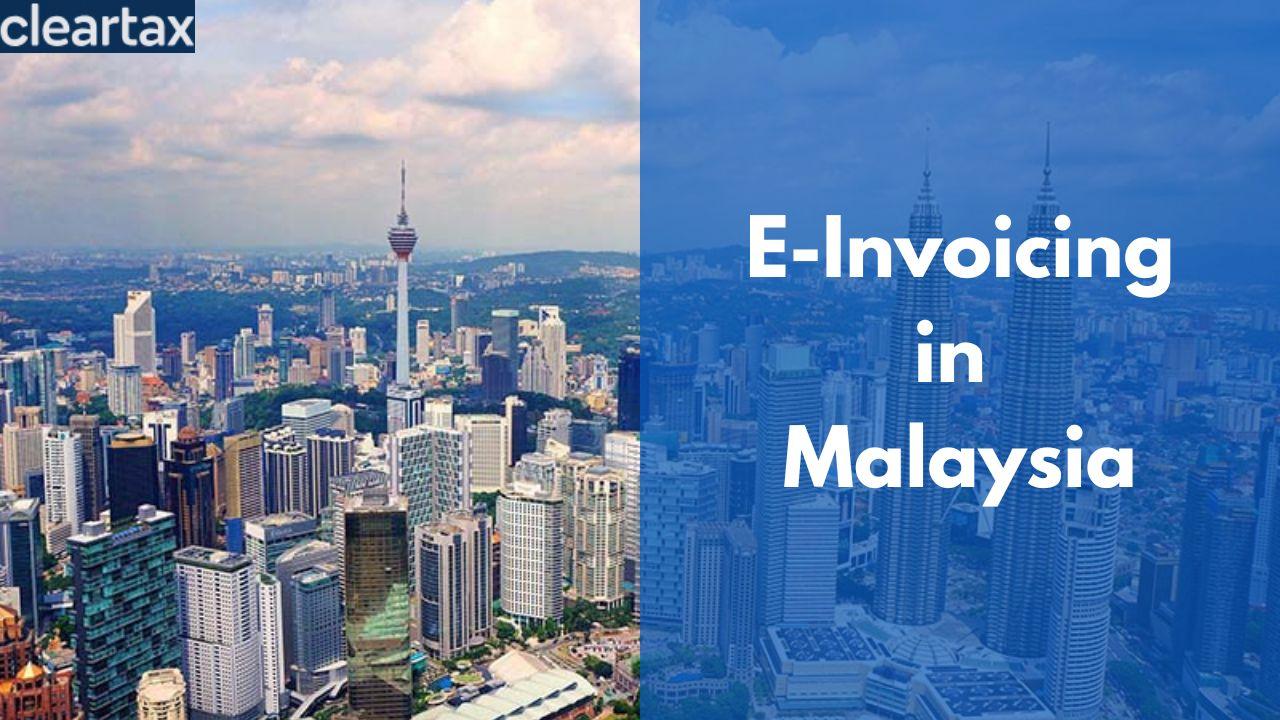ClearTax Unveils Key Insights on Malaysia’s New e-Invoice System: Enhancing Compliance and Business Efficiency

e-Invoicing has now become a global business digital transformation trend. as a part of this trend Malaysia’s Inland Revenue Board (IRBM) is implementing an e-invoicing system to enhance tax administration, curb tax evasion, maintain real-time digital records, and boost economic efficiency.
The e-invoicing mandate requires all businesses to generate e-invoices using e-invoicing software in Malaysia. This mandate begins with the largest businesses, with turnover exceeding RM 100 million, starting from August 1, 2024, and gradually includes other businesses. This article explains the purpose behind Malaysia’s e-invoice system, how it works, its implementation timeline, and more.
What is e-Invoicing in Malaysia?
E-invoicing, or electronic invoicing, is the digital exchange of invoice documents between a supplier and a buyer. Unlike traditional paper invoices, e-invoices are generated, sent, received, and processed electronically. This system uses structured data formats, such as XML or JSON, which allow for automated processing and integration with business and accounting systems.
In Malaysia, e-invoices are first submitted by the issuing party to the Inland Revenue Board of Malaysia (IRBM) through the government e-invoicing system, MyInvois. The IRBM verifies and stores the invoice, then forwards it to the buyer.
Purpose of Malaysia’s e-Invoice System
The primary objective of Malaysia’s e-invoice system is to modernize and streamline the invoicing process, making it more efficient and transparent. The Inland Revenue Board of Malaysia (IRBM) has introduced this system to achieve several key goals:
- Enhance Tax Compliance: E-invoicing ensures real-time reporting of sales transactions, expenses, purchases, adjustments, and refunds to the IRBM, reducing tax evasion and improving compliance.
- Accurate Record Keeping: The IRBM validates and stores updated records of all transactions, facilitating better auditing and assessment.
- Boost Efficiency: Automating the invoicing process reduces paperwork, minimizes human errors, and speeds up transaction processing.
- Increase Transparency: Real-time validation and recording of sales transactions as proof of revenue and purchases as proof of expenses enhances transparency and reporting compliance.
- Support the Digital Economy: Embracing e-invoicing aligns with Malaysia’s broader agenda of building a robust digital economy, attracting more investments, and boosting economic collaboration in the global market.
Implementation Timeline for e-Invoicing in Malaysia
The e-invoice Malaysia initiative is being rolled out in phases to ensure a smooth transition for businesses of all sizes:
- Phase 1 (August 1, 2024): Businesses with an annual turnover exceeding RM 100 million must begin issuing e-invoices.
- Phase 2 (January 1, 2025): The mandate extends to businesses with turnovers between RM 25 million and RM 100 million.
- Phase 3 (July 1, 2025): E-invoicing becomes mandatory for all remaining businesses, regardless of their turnover.
e-Invoicing Models
Malaysia offers two primary models for e-invoice submission:
- MyInvois Portal: This portal allows businesses to manually generate and submit e-invoices. It is ideal for micro, small, and medium-sized enterprises (MSMEs) with lower transaction volumes.
- API Integration: Larger businesses can integrate their enterprise resource planning (ERP) systems with the MyInvois system using an API, enabling automatic generation and submission of e-invoices.
The e-Invoicing Process in Malaysia
The process of generating an e-invoice in Malaysia involves several steps, differing slightly between business-to-business (B2B) and business-to-consumer (B2C) transactions:
B2B Transactions
- Invoice Creation: After a transaction, the supplier generates an e-invoice using e-invoicing software.
- Submission: The e-invoice is submitted to the IRBM through the MyInvois Portal or via an integrated API.
- Validation: The IRBM validates the invoice, checking for completeness and accuracy.
- Notification: Both the supplier and buyer are notified once the e-invoice is validated.
- Sharing: The validated e-invoice, embedded with a QR code, is shared with the buyer.
B2C Transactions
- Invoice Generation: For B2C transactions, suppliers generate e-invoices as requested by consumers.
- Consolidation: Transactions where an e-invoice is not requested are consolidated into a monthly e-invoice.
Challenges and Solutions in e-Invoicing in Malaysia
Despite its benefits, the shift to e-invoicing poses several challenges:
- Compliance: Ensuring compliance with e-invoicing regulations can be complex, especially for businesses with existing manual processes.
- Technological Transition: Moving to an automated system requires investment in technology and staff training.
- Resistance to Change: Employees accustomed to traditional methods may resist adopting new processes.
- Feasibility: Smaller businesses may struggle with the technological demands of e-invoicing.
To address these challenges, businesses can seek assistance from solution providers like ClearTax, which offers comprehensive e-invoicing software in Malaysia. ClearTax’s solutions facilitate seamless integration with the IRBM system, ensuring compliance and maximum efficiency.
Conclusion
The implementation of e-Invoice Malaysia represents a progressive step towards digitalizing the economy and improving tax administration. As the phased rollout process starts, adopting a robust a e-invoicing software will be crucial for businesses to stay ahead and thrive in the digital era.
Media Contact
Organization: ClearTax
Contact Person: Paramesswary Shunmugam
Website: https://www.cleartax.com/my/en
Email: Send Email
Contact Number: +60124385863
Country: Malaysia
Release Id: 20092417233
